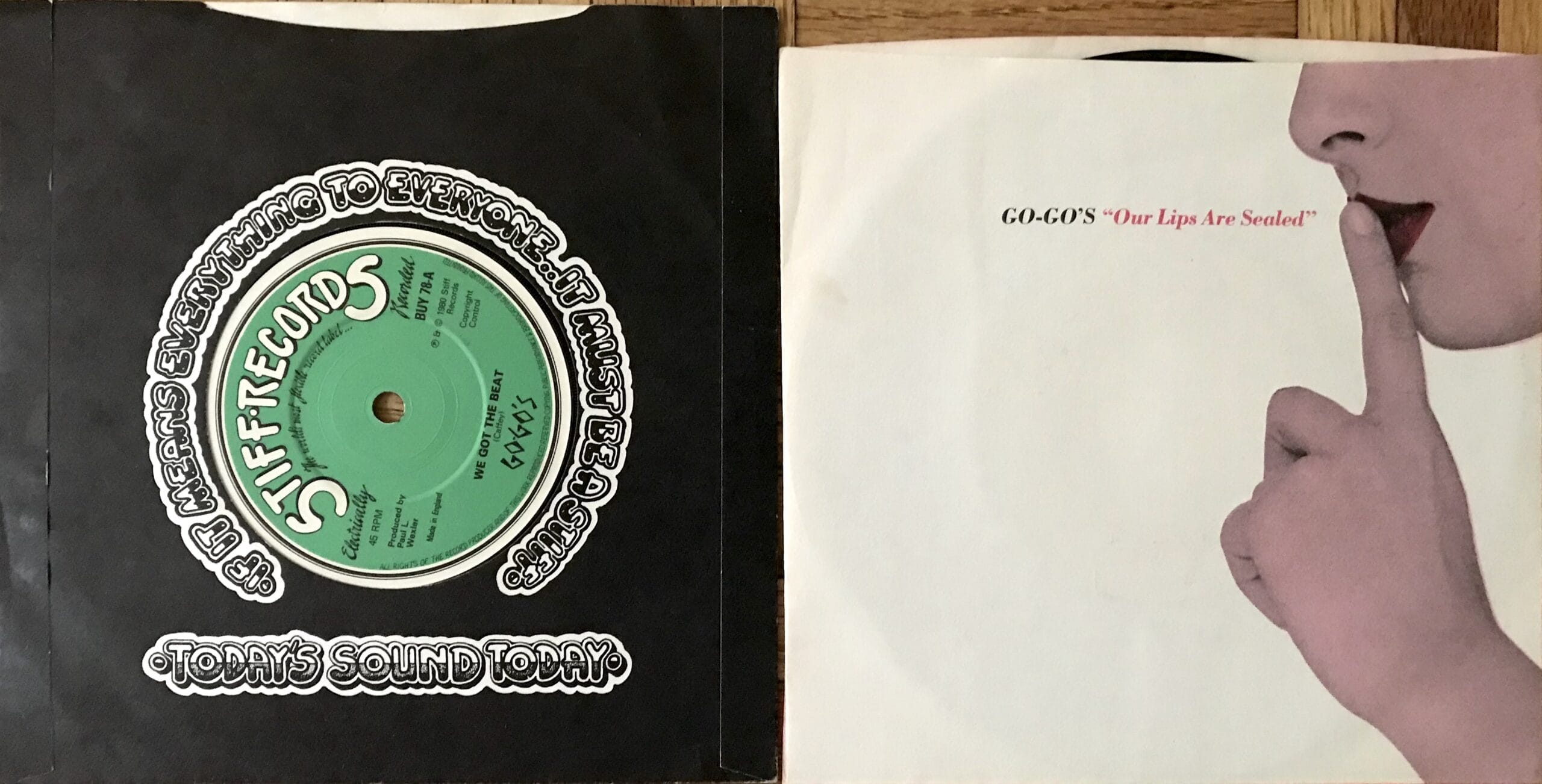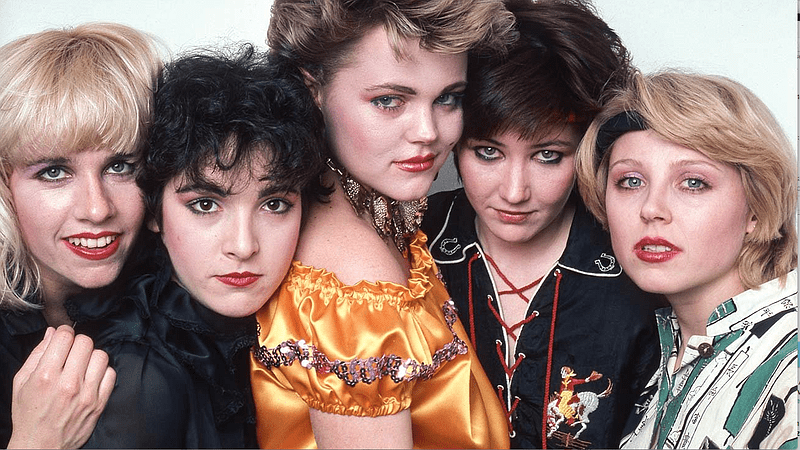The two Vietnamese gals that were hanging out backstage asked me what I had in my briefcase. Contracts, travel itineraries, touring papers, that kinda stuff, I answer. “Oh, so you are the road manager,” the one on the left said. “Yup, I am,” I answer as I double-check that my briefcase is locked and turn back toward the stage at the Fab Mab. I remind myself not to put the case down…anywhere!
I am not in Kansas anymore. This is San Francisco, a wide-open town where in the 1800s men were drugged, given a Mickey, knocked out and kidnapped only to wake up on a ship in the Pacific Ocean headed for some exotic locale in the far east. These new involuntary crew members had just been Shanghaied.
The Mabuhay Gardens (aka The Fab Mab) at 443 Broadway is located in the North Beach section of San Francisco, an area best known for its strip clubs. The punk rock club was run by the infamous Dirk Dirksen, who liked to think of himself as the “pope of punk.” The nephew of Senator Everett Dirksen (a status that he promoted), he deliberately provoked and insulted the audience and the bands. I too had that experience with him. He was a putz, but Dirksen is considered one of the club promoters responsible for bringing the original late 1970s wave of British punk rockers to the United States. He created an “exchange program” where bands from England would come to the Mabuhay Gardens and bands from New York would go to England in return. This helped popularize punk rock. According to Wikipedia, the alley located next to the former site of the Mabuhay still exists and is now named for Dirksen. It has been noted that it still reeks of bad vibes and violence.
These are not money gigs, I mean yeah, the band gets paid, but not much, barely making expenses so the record company has to kick in money and an advertising budget. This time I am working a promotion tour for the ska revival band, Madness, who just had their successful UK album One Step Beyond released stateside on Sire Records. They are touring the States for a few weeks and then the band goes back to England.
Ska evolved in the early 1960s when Jamaicans in their own way attempted to replicate the sound of the New Orleans R&B they heard over their radios. On purpose or by accident they created a new music style. Instead of mimicking the sound of the R&B, the first ska artists developed a distinctive style and voice, which eventually became reggae.

In the late 1970s, several British bands like the Beat (later the English Beat), The Specials, The Selecter and others began reviving the sound of original ska, adding a nervous punk edge to the skittish rhythms. The ska revival bands were often more politically-oriented than any other British musical style. The sound is angry and macho, like the Stranglers and the Sex Pistols. This was a real niche type of music, and Madness, who became known for their style known as “The Nutty Sound,” was successful in England but here in the States, not so much. The political issues of the Caribbean and the UK do not seem to register stateside.

We were booked for a few nights at the Fab Mab, Nov 30th, and Dec 1st. Those were tough nights with dust-ups in the house with audience members and backstage among the various crews and security. Madness did not mind but I was certainly surprised. You just didn’t see that in the rock scene in the States. This was a few months before my Stranglers tour in England [see Ken’s story in Issue 111 – Ed.] and it certainly was a learning experience for me. Finishing up in San Francisco we flew down to the relative safety of Los Angeles for a couple of nights at the Whiskey A-Go-Go. The opening act was The Go-Go’s. I’d heard of them, a local LA girl punk band who were pretty much self-taught musicians and were paying their dues. They had a reputation of partying hard and musically they were very raw. To be honest I never was very interested and the odds of them being successful at least to me were dubious. The first night we (Madness and I) hung around after soundcheck to watch the Go-Go’s first set. They were pretty good; I was impressed. Still a bit raw but you could see they had that certain something. Madness apparently felt the same way and immediately took to them. After the Go-Go’s set, the guys in Madness went to the Go Go’s’ dressing room and told the girls how much they liked their music. It was instant friendship between the bands. shortly after, Madness invited the Go-Go’s to come to England and open for them on their dates. The girls were excited and intrigued. It seemed like a great opportunity and they immediately accepted the invitation. Their manager, Ginger Canzoneri had to scrape up the cash for airfare but soon they were in England. It was not what they expected. The venues and hotels were run down and it was hard knocks. Additionally, this audience had a hard time accepting a girl band. But the Go-Go’s were tough, and they hung in there. They played hard and they were good. They changed some minds but there was no glamor in these gigs. The Specials, another successful British ska revival group also offered the Go-Go’s opening slots. All in all, the Go-Go’s spent close to six months in the UK playing many sets almost every night. It really tightened them up musically. Upon returning to Los Angeles they noticed a change. Now fans were lining up to buy tickets for their shows. Their popularity soared and they had plenty of work at better money. This (pleasantly) surprised them and they assumed it was the buzz they got from doing a British tour. Everyone stateside was impressed and thought their UK tour was a big deal, and the girls were smart enough not to change that perception. Moreover, they really did get better and were playing on a new level. Understandably this reinforced their newfound popularity. In a few months, Miles Copeland, founder of I.R.S. Records signed the Go-Go’s to a recording contract. Miles managed and oversaw British Talent Managers (BTM), Frontier Booking International (FBI, then run by Ian Copeland, Miles’ brother) and I.R.S. Records, which handled the wildly successful rock group the Police (their drummer Stewart Copeland is another brother). The Go-Go’s became the opening act for the Police; same management, booking agency, and record company, so it made sense. Even though they were an opening act to the Police, the Go-Go’s were playing stadiums. Around then Miles Copeland asked producer and Sire Records co-founder Richard Gottehrer to produce the Go-Go’s. One of the first things Gottehrer incorporated was to get them to slow their songs down. Doing this enabled the listening audience to understand the lyrics and increased the desirability of the Go-Go’s songs. The Go-Go’s wanted to work with Richard Gottehrer because of his work with Blondie and his sixties hits “Hang on Sloopy” (The McCoys) and “My Boyfriend’s Back” (The Angels). Beauty and the Beat was their first album. The album also had the effect of moving the girls towards pop and away from punk, which initially horrified them. Two very successful singles came out of that album – “We Got the Beat” and “Our Lips Are Sealed.” That is the thing about live music; it tends to be faster than the studio recordings. I have noticed on tours that an hour and three quarters set at the beginning of the tour many times will time out to an hour and forty minutes by the end of the tour. In the case of one group I worked with the set got so short by the middle of the tour that they had to add a song. Back on the Madness tour, we went east to play the Mudd Club in Manhattan. New York welcomed them with open arms. Madness’s label, Sire Records, is based in New York so there was a big turnout of press and music business personnel. There was such a demand for tickets they could have played the Mudd Club for a week and sold out every show! Madness had a few more dates that included the Paradise Club, Tier 3, Hurrah, and the Hot Club. The attendance was good. The lads had a good time on their short American tour but were happy to get back home to their UK fans and drink some scrumpy. In 1982, Madness would hit it big with their smash, “Our House.” Postscript: A Note on Record Labels and Royalties Sire Records is an interesting record company. It started in 1966 as an independent record label founded by Seymour Stein and Richard Gottehrer (this was before Richard became the producer for the Go-Go’s) and occupied a townhouse on West 73rd Street. Over the years Sire records signed many acts besides Madness including Madonna, the Pretenders, Ice-T, Talking Heads, The Ramones, Depeche Mode, The Cure, the Smiths and k.d. lang just to name a few. Record companies are an unusual business, where a hit record makes so much money that it covers the loss of the records that do not sell. If a record company has 90% failures and 10% hits it is probably doing just fine. In fact, record companies are frequently just rented offices with executive suites, an art department, an A&R department, and public relations and promotion people. There are no hard assets and all manufacturing is farmed out. Expenses are rent, salaries and cash outlay for the artist, payments for the plants for vinyl and/or CD pressings, and distribution. Everything a record company does for the artist including advertising, tour support, studio rental, travel, promotional items and such is charged back to the artist. Not all record companies are successful, but I have never heard of one going bankrupt (they own no assets, and if they had a catalog or publishing they could sell those rights or merge with another record company). Nowadays artists try to get their money upfront upon signing with a label because the process of getting royalties is, and I quote, “a long and winding road.” The songwriters do better over time and even though the record companies ask for the publishing rights, the labels are happy to settle for fifty percent, but the artist should fight to keep it all. When you are in a band everyone usually splits the royalties evenly, but the songwriter or writers get additional songwriting revenues separately. To me, this seems fair but because of the different amount of cash each band member may receive it sometimes causes issues between the people in the band. An aside: In 1985 the Beatles catalog sold for 47.5 million dollars to Michael Jackson. He was advised to buy it by Paul McCartney, and it was a particularly good investment. In 1995 he sold the rights to Sony/ATV for $95 million. In 2018 Paul McCartney regained the rights in a confidential settlement agreement with Sony/ATV. Original Go-Go's 45s.
Original Go-Go's 45s.



